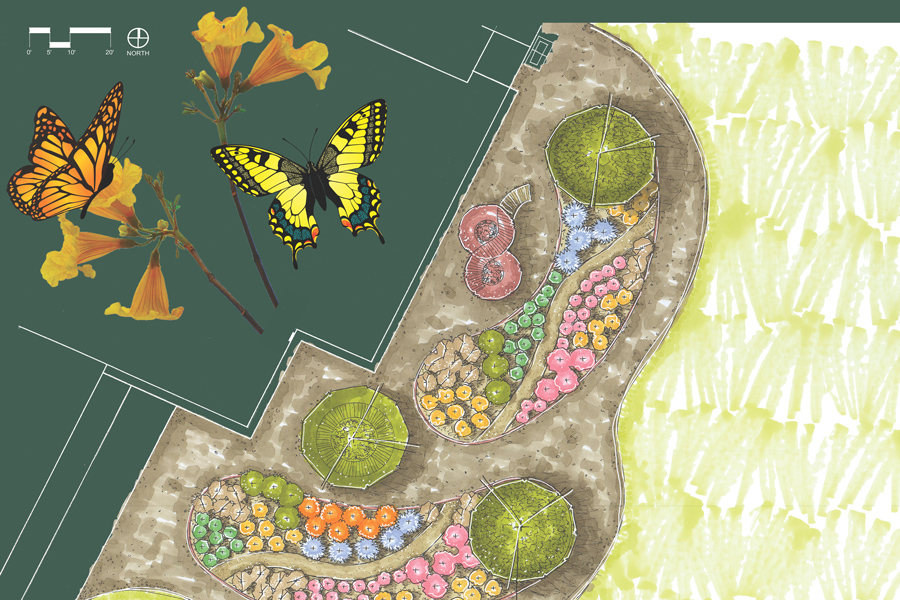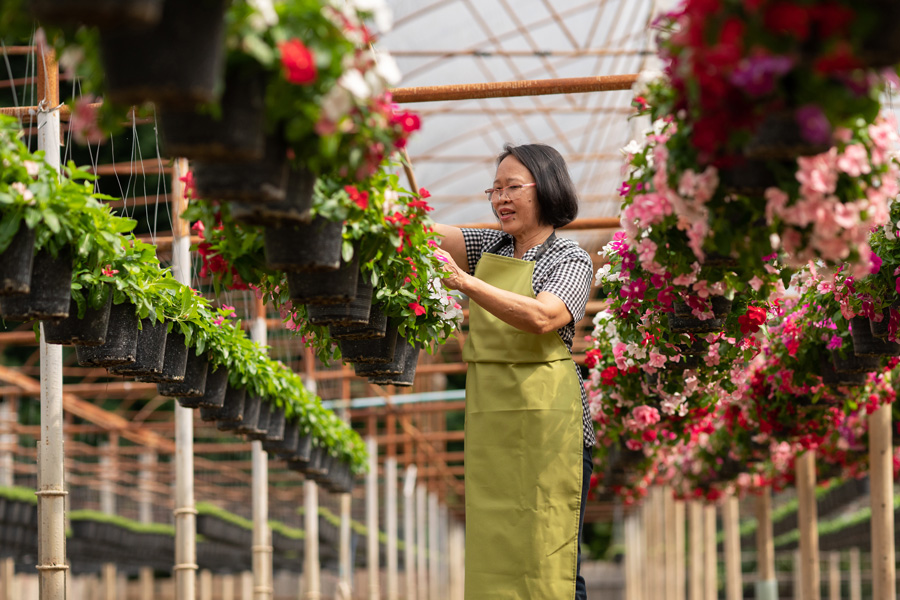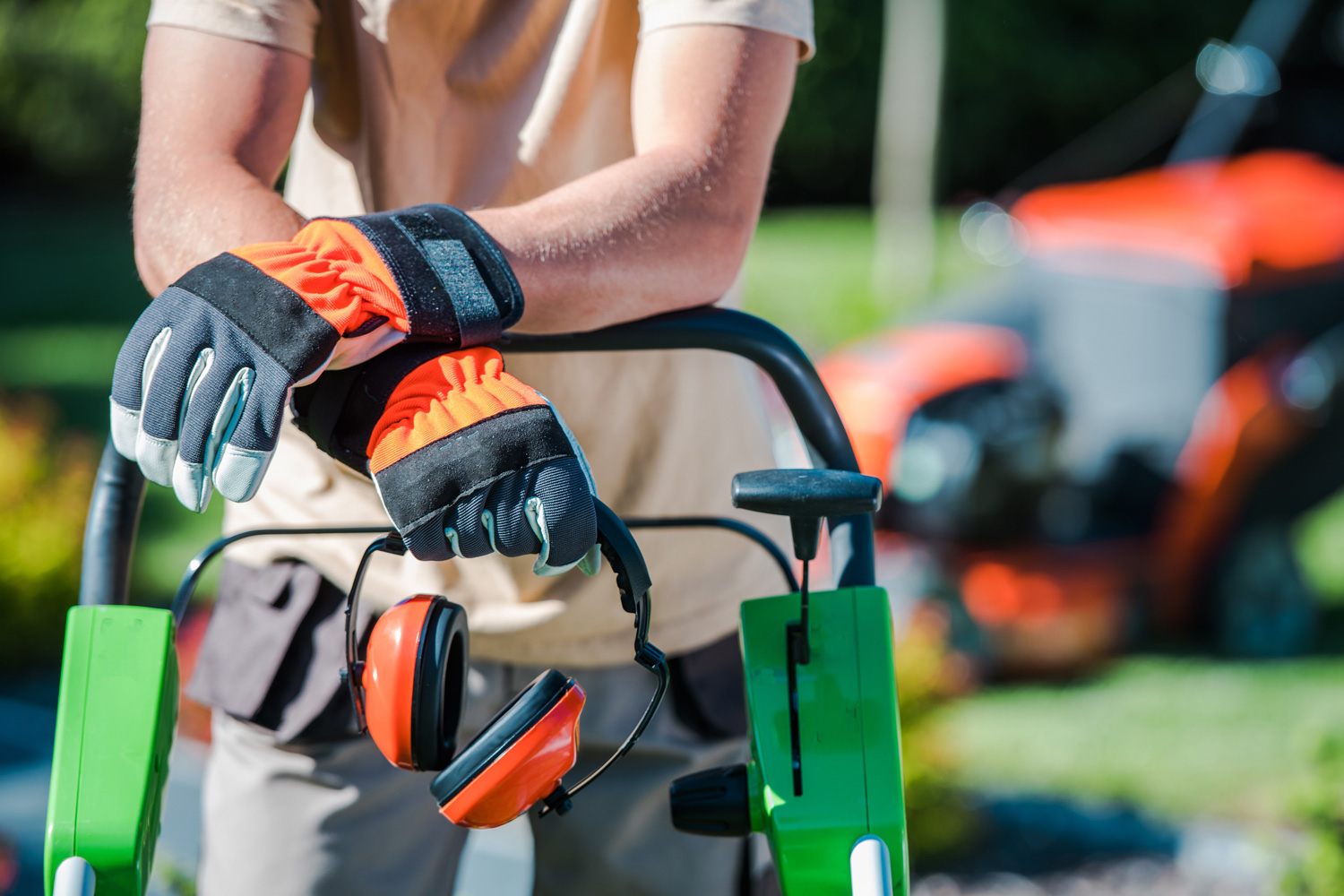Urban Agriculture
-

Most gardeners realize that they must manipulate the soil in their garden to successfully grow vegetables. Whether by hand, with a shovel, or a mechanical piece of equipment, tilling is an important practice for reducing compaction and mixing organic amendments into the soil. While smaller gardens and most raised beds can be turned with hand tools, larger gardens may require more sizable equipment. One of the home gardener’s most useful tools is a mechanical tiller.
Bob Westerfield
|
-

The lead author of this publication is Katherine Melcher, College of Environment and Design. The UGA Extension contact for the publication’s content is Becky Griffin. These appendices provide information about plants that grow well in Georgia’s Piedmont Ecoregion, as well as to-scale plant symbol and plant ID card templates for use in creating design plans.
Becky Griffin
|
-

The lead author of this publication is Katherine Melcher, College of Environment and Design. The UGA Extension contact for the publication’s content is Becky Griffin. Providing opportunities for youth to design their environment can increase their connection to everyday nature and increase their sense of empowerment. By combining ecology and design, garden design can also be a central piece in STEAM (science, technology, engineering, art, and math) education. This activity guide contains five chapters that explain the purpose of pollinator gardens, the design process, and the basic steps used to create a planting plan. The chapters are supplemented with activities to guide youth and other beginning designers through the process of creating a pollinator garden.
Becky Griffin
|
-

The idea of producing your own food in a clean, controlled environment is very appealing. While dreams may be big, careful research and planning should be done prior to jumping into any farm venture. Important items such as desire, capital, feasibility, labor, demographics, and marketing all need to be considered.
Bob Westerfield and Makenzie English
|
-

Many people help with tree cleanup after storms pass through. Some are citizen volunteers, and others are private and public sector workers who may or may not have experience with chainsaws. This presentation covers the information every chainsaw operator needs to know before turning on the saw. Topics include personal protective equipment, the five essential safety features of a chainsaw, safe carry, safe start, insect pests, site inspection, and electrical/electrocution hazards. Authors include E.M. Bauske, W. Williams, H. Kolich, J. Fuder, and A. Martinez-Espinoza.
Alfredo Martinez, Ellen M. Bauske, Heather Kolich, and Josh Fuder
|
-

Muchas personas ayudan con la limpieza de los árboles después de las tormentas. Algunos son ciudadanos voluntarios; otros son trabajadores del sector público y privado que pueden o no tener experiencia con motosierras. Este PowerPoint cubre la información que todo operador de motosierra necesita saber antes de encender la motosierra. Los temas incluyen equipo de protección personal, las cinco características esenciales de seguridad de una motosierra, transporte seguro, arranque seguro de la motosierra, plagas de insectos, inspección del sitio y riesgos con electricidad/electrocución.
Alfredo Martinez, Ellen M. Bauske, Heather Kolich, and Josh Fuder
|
-

C 1199
Storm Damaged Tree Cleanup
Trees are often damaged in storms and can be extremely dangerous to clean up. Storm damaged trees are subject to all the perils associated with tree felling and much more. Working conditions may be difficult. Downed trees may be entangled in other trees, or tossed on buildings, vehicles, or wires. Energy stored in compressed limbs and trunks can be release suddenly, explosively, and fatally. Each situation is unique and requires careful consideration. Application of the included five-step cutting plan will help keep the saw operator safe and working effectively. Authors include E.M. Bauske, P. Kelley, W. Williams, and A. Martinez-Espinoza.
Alfredo Martinez and Ellen M. Bauske
|
-

Los árboles son los que mas se dañan en las tormentas y son estos los mas peligrosos de limpiar. Los arboles dañados por tormentas están sujetos a una gran cantidad de peligros asociados con la tala de arboles y mucho, mucho mas. Las condiciones de trabajo pueden ser muy difíciles. Los arboles caídos se pueden enredar con otros arboles, o caerse en edificios, vehículos o alambres. La energía apresada en las ramas o en los troncos comprimidos puede ser liberada repentina, explosiva y fatalmente. Cada situación es diferente y requiere una consideración única. La aplicación de este Plan de corte de cinco pasos ayudará a mantener al operador de la sierra seguro y trabajando de manera efectiva.
Alfredo Martinez and Ellen M. Bauske
|
-

These checklists can be used to introduce new landscape workers to safe work practices. They ensure that job safety training includes safety instruction. Included are sections on general safety precautions, equipment safety, lawn mower safety and pesticide safety.
Rolando Orellana, Alfredo Martinez, and Ellen M. Bauske
|